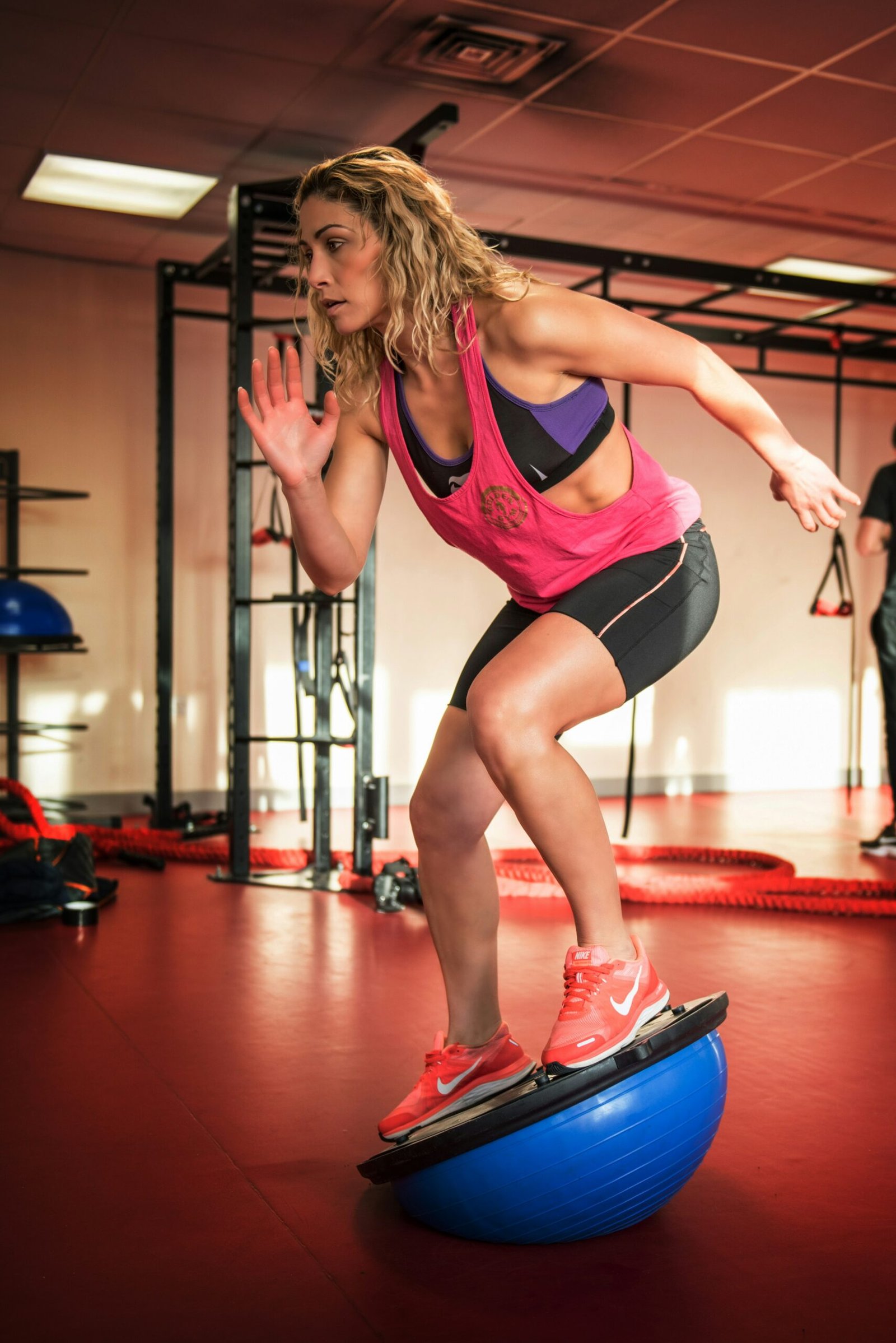Introduction to Toning Thighs
Toning thighs is not merely an aesthetic pursuit; it plays a significant role in overall health and fitness. Strong, toned thighs contribute to better mobility, which is crucial for performing everyday activities with ease. Enhanced muscle tone in the thighs also leads to an increased metabolism, aiding in weight management and overall energy levels. Furthermore, well-toned thighs can significantly improve one’s appearance, boosting self-confidence and personal satisfaction.
Muscle toning refers to the process of developing muscle firmness and definition through exercise and proper nutrition. For the thighs, this often involves a combination of strength training and cardiovascular activities. The benefits of having toned thighs are multifaceted, ranging from improved physical performance to better posture and reduced risk of injury.
Several factors can lead to the development of flabby thighs. A sedentary lifestyle, characterized by prolonged periods of inactivity, often results in muscle atrophy and fat accumulation in the thigh area. Poor dietary habits, particularly the consumption of high-calorie, low-nutrient foods, can exacerbate this issue. Hormonal imbalances and genetic predispositions can also contribute to the accumulation of excess fat and reduced muscle tone in the thighs.
Understanding these underlying causes is essential for developing an effective strategy to tone flabby thighs at home. By addressing lifestyle factors and incorporating targeted exercises, individuals can achieve stronger, more defined thighs, thereby enhancing their overall health and fitness. This comprehensive guide will provide you with the necessary tools and knowledge to embark on your journey towards toned thighs, starting from the comfort of your home.
Understanding Thigh Muscles
The anatomy of the thigh is both intricate and fascinating, comprising several major muscle groups that play a pivotal role in mobility and stability. The primary muscles in the thigh include the quadriceps, hamstrings, and adductors, each contributing uniquely to leg movements.
The quadriceps, located at the front of the thigh, are a powerful group of four muscles: the rectus femoris, vastus lateralis, vastus medialis, and vastus intermedius. These muscles are primarily responsible for knee extension, essential for activities such as walking, running, and jumping. Strengthening the quadriceps is crucial for toning thighs and improving overall leg strength.
On the posterior side of the thigh, the hamstrings consist of three muscles: the biceps femoris, semitendinosus, and semimembranosus. These muscles facilitate knee flexion and hip extension, movements integral to actions like squatting, cycling, and climbing stairs. Effective targeting of the hamstrings can significantly enhance the balance and flexibility of the legs, contributing to more toned thighs.
The adductors, situated on the inner thigh, include muscles like the adductor longus, adductor brevis, and adductor magnus. These muscles are responsible for pulling the legs towards the midline of the body, a function known as adduction. Activities such as side lunges and sumo squats specifically engage the adductors, aiding in the toning and strengthening of the inner thighs.
Understanding the roles of these muscle groups is paramount for anyone aiming to tone flabby thighs. By focusing on exercises that target the quadriceps, hamstrings, and adductors, individuals can develop a more comprehensive and effective workout regimen. This knowledge enables a strategic approach to exercise, ensuring that each muscle group is adequately engaged, leading to more balanced and toned thighs.
Effective Home Exercises for Toning Thighs
Toning thighs at home requires a combination of targeted exercises that engage multiple muscle groups in the lower body. Bodyweight exercises are particularly effective as they do not require any equipment and can be performed anywhere. Incorporating resistance bands can further enhance the intensity of these workouts. Below are some highly effective exercises for achieving toned thighs.
Squats: Squats are a fundamental exercise for toning the thighs. Stand with your feet shoulder-width apart, toes pointing slightly outward. Lower your hips as if sitting back into a chair, keeping your chest up and knees behind your toes. Press through your heels to return to the starting position. Squats primarily target the quadriceps, hamstrings, and glutes.
Lunges: Lunges are excellent for targeting the thighs and glutes. Start by standing tall with feet hip-width apart. Step forward with one leg, lowering your hips until both knees are bent at a 90-degree angle. Ensure your front knee is directly above your ankle. Push back to the starting position and repeat on the other leg. Lunges also improve balance and stability.
Leg Lifts: Leg lifts are effective for targeting the inner and outer thighs. Lie on your side with your legs straight. Lift your top leg as high as possible without rotating your hips. Lower it back down with control. For inner thighs, perform the exercise while lying on your back, lifting one leg towards the ceiling and then lowering it slowly.
Resistance Band Side Steps: This exercise adds intensity to thigh workouts. Place a resistance band around your legs, just above your knees. Stand with feet hip-width apart and lower into a half-squat position. Step to the side with one leg, followed by the other, maintaining tension in the band. This exercise targets the outer thighs and glutes.
Glute Bridges: While primarily targeting the glutes, glute bridges also engage the hamstrings and thighs. Lie on your back with knees bent and feet flat on the floor. Lift your hips towards the ceiling, squeezing your glutes at the top. Lower back down and repeat. Adding a resistance band around your thighs can increase the difficulty.
By regularly incorporating these exercises into your routine, you can effectively tone your thighs and enhance overall lower body strength. Each exercise should be performed with proper form to maximize benefits and minimize the risk of injury.
Developing a workout routine for toning flabby thighs requires a strategic approach that combines consistency, frequency, and a balanced mix of strength training and cardio exercises. Consistency is paramount; committing to regular workouts will yield noticeable results over time. Ideally, one should aim to exercise at least three to four times a week to allow for muscle recovery while maintaining steady progress.
Frequency and Balance
The frequency of workouts should be tailored to individual fitness levels and goals. For beginners, starting with two to three sessions per week is advisable, gradually increasing to four or five as endurance builds. A balanced routine that incorporates both strength training and cardiovascular exercises is crucial for effectively toning thighs. Strength training exercises, such as squats, lunges, and leg presses, specifically target thigh muscles, promoting muscle growth and definition. On the other hand, cardio activities like running, cycling, or high-intensity interval training (HIIT) help burn fat, enhancing muscle visibility.
Sample Workout Routines
For beginners, a simple routine might include bodyweight exercises like squats (3 sets of 10-15 reps), lunges (3 sets of 10-15 reps), and glute bridges (3 sets of 15 reps). Complement these with 20-30 minutes of low-impact cardio, such as brisk walking or cycling, to boost overall fitness.
Intermediate individuals can incorporate more varied exercises and higher intensity. This could involve weighted squats (3 sets of 10 reps), Bulgarian split squats (3 sets of 10 reps per leg), and deadlifts (3 sets of 8-10 reps). Cardio sessions can be extended to 30-45 minutes, with activities like jogging or HIIT workouts.
Advanced routines should challenge the muscles further with exercises such as barbell squats (4 sets of 8 reps), walking lunges with weights (4 sets of 12 reps per leg), and plyometric exercises like jump squats (3 sets of 15 reps). Cardio workouts can be more intense and longer, including activities like running or intense cycling for 45-60 minutes.
Incorporating these elements into a structured routine, while maintaining consistency and balance, will effectively tone thighs and improve overall fitness. Remember, the journey to toned thighs is gradual and requires dedication and patience.
Incorporating Cardio for Fat Loss
Cardiovascular exercise plays a pivotal role in reducing overall body fat, which is essential for revealing toned muscles. When aiming to achieve toned thighs, incorporating cardio into your fitness routine is crucial as it helps burn calories and reduces fat, allowing the underlying muscle definition to become more visible.
Several effective cardio exercises can be performed at home without the need for special equipment. One of the simplest yet highly effective exercises is jumping jacks. This full-body workout increases heart rate and burns calories efficiently. Begin with sets of 20-30 jumping jacks, gradually increasing the number as your endurance improves.
High knees are another excellent option. This exercise involves running in place while lifting your knees as high as possible. High knees not only elevate your heart rate but also engage your core and lower body muscles, making it a comprehensive fat-burning exercise. Aim for intervals of 30 seconds to one minute, ensuring you maintain proper form to maximize benefits.
Running in place is a straightforward yet powerful cardio exercise. It can be modified by incorporating variations such as butt kicks or alternating between slow and fast paces to keep the workout dynamic and engaging. Start with 5-10 minutes and gradually increase the duration as your stamina builds.
To effectively integrate cardio into your overall fitness routine, consider combining these exercises into a high-intensity interval training (HIIT) session. HIIT involves short bursts of intense activity followed by brief rest periods, which has been proven to be highly effective for fat loss. For instance, you can perform 30 seconds of jumping jacks, followed by 30 seconds of rest, then 30 seconds of high knees, and so on.
Incorporating these cardio exercises into your regular workout regimen not only aids in fat loss but also improves cardiovascular health, endurance, and overall fitness, making them indispensable for achieving toned thighs.
Nutrition Tips for Toned Thighs
Achieving toned thighs is not solely dependent on exercise; proper nutrition plays a crucial role in muscle development and fat reduction. A balanced diet supplies the necessary nutrients to repair and build muscle tissue, while also supporting overall health. One of the foundational elements of this diet is adequate protein intake. Protein is vital for muscle repair and growth, making it essential for anyone aiming to tone their thighs. Lean sources of protein such as chicken, fish, tofu, and legumes should be included in your daily meals. Aim for at least 20-30 grams of protein per meal to meet your body’s needs.
Healthy fats are another important component of a diet geared toward toning thighs. Contrary to popular belief, not all fats are detrimental. Unsaturated fats, found in avocados, nuts, seeds, and olive oil, are essential for hormone production and overall cellular health. These fats can help manage inflammation and improve muscle recovery, making them a valuable addition to your nutrition plan. Incorporate a handful of nuts or a tablespoon of olive oil into your meals for a healthy fat boost.
Hydration cannot be overlooked in the quest for toned thighs. Water is crucial for metabolic processes, including the transportation of nutrients and the removal of waste products. Staying hydrated helps maintain muscle function and can even aid in weight management by promoting satiety. Aim to drink at least eight glasses of water a day, more if you are engaging in intense exercise.
When it comes to meal planning, focus on whole foods over processed options. Prepare balanced meals that combine proteins, healthy fats, and complex carbohydrates. Carbohydrates are essential for energy, so opt for whole grains, fruits, and vegetables that provide sustained energy release. Additionally, healthy snacking can help maintain energy levels and prevent overeating. Choose snacks that combine protein and healthy fats, such as Greek yogurt with almonds or hummus with carrot sticks.
Incorporating these nutritional principles can significantly boost your efforts to tone thighs. By focusing on protein-rich foods, healthy fats, adequate hydration, and balanced meal planning, you can create a dietary foundation that supports your fitness goals.
Tracking Your Progress
Tracking your progress is crucial when it comes to toning flabby thighs at home. Consistently monitoring your advancements can provide motivation, enable you to make necessary adjustments to your workout routine, and help you stay committed to your fitness goals. There are several effective methods to track your progress, each offering unique benefits.
One of the simplest yet most effective ways to track your progress is by taking regular measurements. Measure the circumference of your thighs at the same point each week to observe changes over time. This method provides concrete data and can be more encouraging than relying solely on the scale, as muscle mass may increase while fat decreases.
Keeping a workout journal is another beneficial strategy. Documenting your exercises, repetitions, and any adjustments you make to your routine allows you to see your improvements and identify what works best for toning your thighs. Additionally, a journal can serve as a motivational tool, reminding you of your dedication and progress.
In today’s digital age, fitness apps offer a convenient way to track your progress. These apps often come with features like progress charts, reminders, and even personalized workout plans. Utilizing a fitness app can streamline your tracking process and provide instant insights into your progress, making it easier to stay on course.
Setting realistic goals is essential in maintaining motivation and ensuring continual progress. Break down your long-term objective of toning your thighs into smaller, achievable milestones. Celebrate these milestones to maintain enthusiasm. Recognizing your accomplishments, no matter how small, can significantly boost your confidence and commitment to your fitness journey.
By employing these methods—taking measurements, maintaining a workout journal, and using fitness apps—you can effectively track your progress in toning your thighs. Setting realistic goals and celebrating milestones will keep you motivated and focused, making your fitness journey both fulfilling and successful.
“`html
Staying Motivated and Overcoming Plateaus
Embarking on the journey to tone thighs at home can be challenging, especially when motivation wanes or progress plateaus. To maintain enthusiasm and continue seeing results, it’s crucial to implement strategies that keep you engaged and committed. One effective method is to vary your workout routine regularly. Incorporate different exercises targeting the thighs, such as squats, lunges, and leg lifts, to prevent monotony and continuously challenge your muscles.
Another valuable approach is finding a workout buddy. Exercising with a partner can provide mutual support, accountability, and a sense of camaraderie, making the process more enjoyable and less daunting. Together, you can celebrate milestones and encourage each other through difficult phases.
Setting short-term, achievable goals is also instrumental in maintaining motivation. Rather than fixating solely on the end goal of toned thighs, break it down into smaller, measurable objectives. For example, aim to increase the number of repetitions or the duration of your workouts over time. Tracking progress towards these mini-goals can offer a sense of accomplishment and spur you on to achieve the next milestone.
Additionally, self-care is paramount in this journey. Listening to your body and allowing adequate rest is essential to avoid burnout and injury. Ensure you’re getting enough sleep, staying hydrated, and incorporating rest days into your routine. This balance will not only enhance your physical well-being but also sustain your mental and emotional health.
In overcoming plateaus, it may be necessary to reassess and tweak your exercise plan. Sometimes, incorporating new challenges or adjusting the intensity can reignite progress. Staying informed through research or consulting fitness professionals can provide fresh insights and techniques to keep advancing towards toned thighs.











